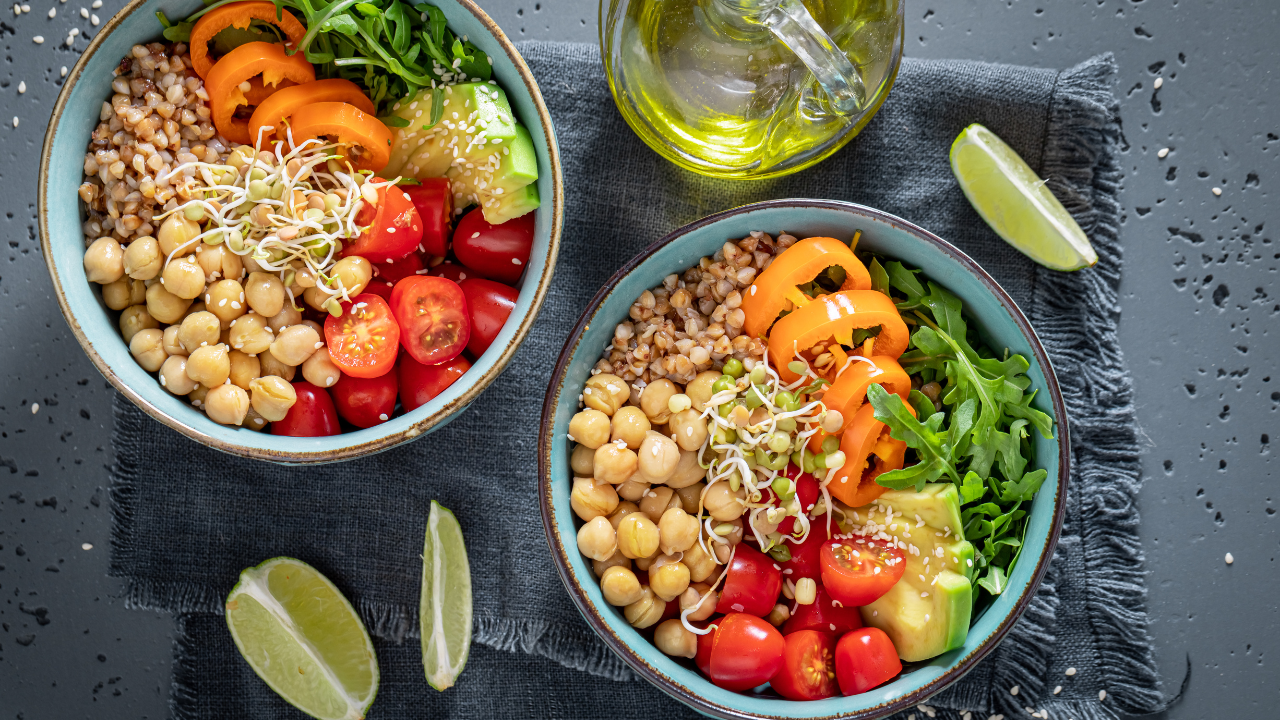Animal vs. Plant Milks - Which Type of Milk is Best?
This post was written by Maria Beyer, a Nutrition & Dietetics undergraduate student at the University of Delaware. You can find her on Instagram @bitestolife. Content reviewed by Hannah Thompson, RDN, LD, CPT.
Dairy-free milks are on the rise! It’s rare that you would find a coffee shop without a milk alternative or even an ice cream shop without a dairy-free option these days. Let’s dive into the reasoning behind this popularity and it’s nutritional comparison to the OG milks.
What are plant milks?
Plant-based milks are made from the grinding of beans or nuts with a mixture of water, flavors, vitamins, and minerals. The production process varies for each type. Some common options are soy, almond, cashew, and coconut milk. A plant milk that has recently come into popularity due to its thicker texture that is similar to cow’s milk is oat milk, which is derived from whole oat grains.
Fun fact: Did you know that because of the FDA’s standards of identity, the word “milk” is regulated? This is why you may see “almond beverage, mylk, oat blend” etc. It’s because these beverages don’t qualify as “milk”.
Nutritional comparisons
There is actually no definitive answer to which milk is best! It depends on why you choose it and what you intend to use it for based on your needs.
Cow’s milk
Cow’s milk is the highest in calories, fat, and protein, and is also the best source of some important vitamins like calcium and vitamin B12. This is why it is recommended for growing children to drink milk.
Per 1 cup serving, it contains about 150 calories and 11-13 grams of naturally occurring sugar, which is known as lactose. For some, lactose can be difficult to digest, so it is perfectly reasonable to branch out and try some alternatives. There are also lactose-free cow’s milks available as well.
Soy milk
Nutritionally, soy milk is the closest non-dairy option to cow’s milk because of its protein and B12 content. This can be a great benefit to those who do not consume animal products and need more B12 in their diets. Soy milk typically contains soybeans, water, sugar, added vitamins and minerals, and gums for texture.
Per 1 cup serving, soy milk contains about 110 calories, 7 grams of protein, 2 grams of fiber, and 6 grams of sugar. The flavor of soybeans can be stronger and sweeter than other milk alternatives, and the texture is usually thick and creamy.
Almond milk
Almond milk is popular for being low-calorie and having a nutty flavor that is mild and not overpowering. It contains almonds, sugar, water, gums and emulsifiers, and natural flavors.
Nutritionally, this alternative does not contribute nearly any macronutrients like protein or fat compared to cow’s milk. However, it does offer some beneficial vitamins and minerals. 1 cup of almond milk contains 60 calories, 1 gram of protein, 2 grams of fat, 0 grams of fiber, and 7 grams of added sugar (if you examine the sweetened varieties).
Oat milk
Oat milks typically contain water, oats, sunflower oil, gums, and added vitamins and minerals. You may see a trend forming as most plant milks contain similar ingredients. The secondary ingredients like gums are used to help enhance texture and shelf life.
1 cup of oat milk usually contains 90-100 calories, 2 grams of protein, and 2 grams of fiber. The benefit of fiber comes from the oats and differentiates it from other plant milks.
Coconut milk
Finally, coconut milk is extracted from coconut flesh and puréed with water. Similar to soy milk, it has a strong taste that is very different from the average dairy milks. It can be used for cooking and contains more fat than the other plant based options discussed.
1 cup of So Delicious coconut milk contains 80 calories, 4.5 grams of fat, 10 grams of carbs, and 8 grams of sugar.
Bottom line - which type of milk is best?
Don’t overthink it. You can generally choose whichever one you prefer the taste of. Overall, it’s not wrong to choose one over the other, and if you want to find the best one, give them all a try!
































